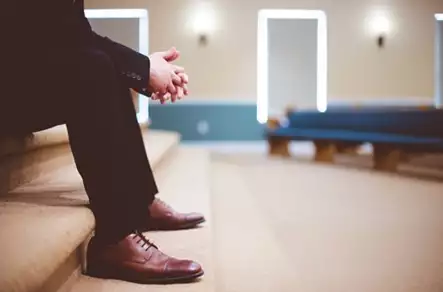As businesses look to returning to work outside of the home, office spaces are being reimagined to make room for social distancing. While no one-size-fits-all template exists for all companies, here are some initiatives to consider when planning your return-to-office strategy – and adaptability will be key.
As businesses look to returning to work outside of the home, office spaces are being reimagined to make room for social distancing. While no one-size-fits-all template exists for all companies, here are some initiatives to consider when planning your return-to-office strategy – and adaptability will be key.
Five quick tips for creating a socially distanced workplace:
- Reduce the density of people in your office at one time by staggered face-to-face time – GoSpace can help.
- Work out your optimal desk layout with Robin's social distancing tool and set each one up with a protective shield.
- Make sure you have flexible space that allows you to size up and down to adjust to changing circumstances.
- Look into cost-effectively renting furniture if you need more desks.
- Use signage to create buffer zones and one-way systems – Glyphics offer a range of customisable social distancing stickers.
Reconfiguring the workplace to meet Public Health England guidelines on social distancing is a high-priority challenge facing companies gearing up to return to some form of normal.
CEOs are re-thinking office design with people as the focus, carefully planning spaces that their staff will feel safe, happy and confident to return to work in. Nevertheless, 65% of UK employees are concerned about standards being met finds a study by interior design company ThirdWay on 1,500 respondents.
“We all want everyone to get back to work and start rebuilding Britain. But workers need confidence that they won’t have to put themselves or their families at unnecessary risk," says Trades Union Congress General Secretary Frances O’Grady.
While businesses with large budgets have been quick to invest in Perspex screens, one-way systems to minimise the density of people in high-flow zones, motion-sensor doors, and even infrared temperature screening (as seen in Bloomberg's offices), smaller companies that have taken a significant financial hit during the crisis simply don't have the funds.
However, creating a COVID-secure office space, “Should [still] be achievable through creative, yet uncomplicated, office design solutions.” said Linzi Cassels, principal and design director at global architectural firm Perkins + Will, in conversation with Wired. “The ability for spaces to flex to accommodate future waves of pandemic,” will be essential, she says.
Managing people
Reducing the density of people in your office should be a top priority to minimise the risk of virus transmission between staff – especially if you don’t have the luxury of surplus space.
"The simplest way to do that is obviously to reduce the number of people going in and making sure that when people are in the office, they can maintain a safe distance," says Liz Close, Founder of interior design agency Generate Studios and furniture company Rawside based at Workspace's Kennington Park in Oval.
During the pandemic, artificial intelligence has helped businesses do just that. GoSpace uses AI to automatically schedule remote work and team time in the office. Its cloud-based solution allows businesses to be more flexible and responsive to changing circumstances and plan staggered shift patterns for staff. It analyses work patterns in the office and remotely to ensure the right teams are together at the right times in order to maximise productivity and minimise exposure to the virus.
Similarly, Robin's seat assignment and desk booking solution is another tool helping businesses reimagine how they work. It allows managers to determine the capacity of their space, experiment with social distancing layouts virtually, and it enables desks to be booked and access restricted with a map clearly showing which desks are and are not available to staff on a particular day.
Robin's office social distancing solution in action
Managing space
Protecting those individuals through a well-planned spatial design that can be coupled with thorough cleaning procedures is the next step. "It's about making your team feel safe in the workplace and that they're not walking into a dangerous space. It's about making it feel like it's a place that they want to go into", says Liz.
She recommends being "creative" with your space: opting for different desk arrangements if space is limited, such as shifting desks to face walls and windows around the perimeter of the room. Buying new furniture if desk numbers are limited can be incredibly expensive, but you can, "Look at renting items for the short term if you wish to adapt your office without a massive investment," she says – an initiative provided by Rawside.
The company has also created an 100% recyclable protective desk shield made from cardboard and the lightweight design can be secured to a desk with velcro. The New England Journal of Medicine published a study that found that the coronavirus can remain stable on plastic and steels for up to 72 hours, but on cardboard for only up to 24 hours, making the eco-shields an effective and affordable substitute for Perspex barriers.
Rawside's Eco-shield protects workers from the virus
Routing traffic flows around an office is also key. Businesses should think about creating 2-metre safety buffer zones around individual desks with either floor stickers or brightly coloured tape, one-way signage to direct people around the office tactfully (Glyphics offer a range of customisable social distancing stickers), and keeping doors wedged open to maintain a flow of people.
Read more about how to prepare to settle back into your office after lockdown and the hygiene practices that should be put in place here and remember to keep referring back to the latest government guidance for official information.
For helpful advice and up-to-date resources on how to navigate your business through COVID-19 and beyond, head to our Back to Business Hub.



